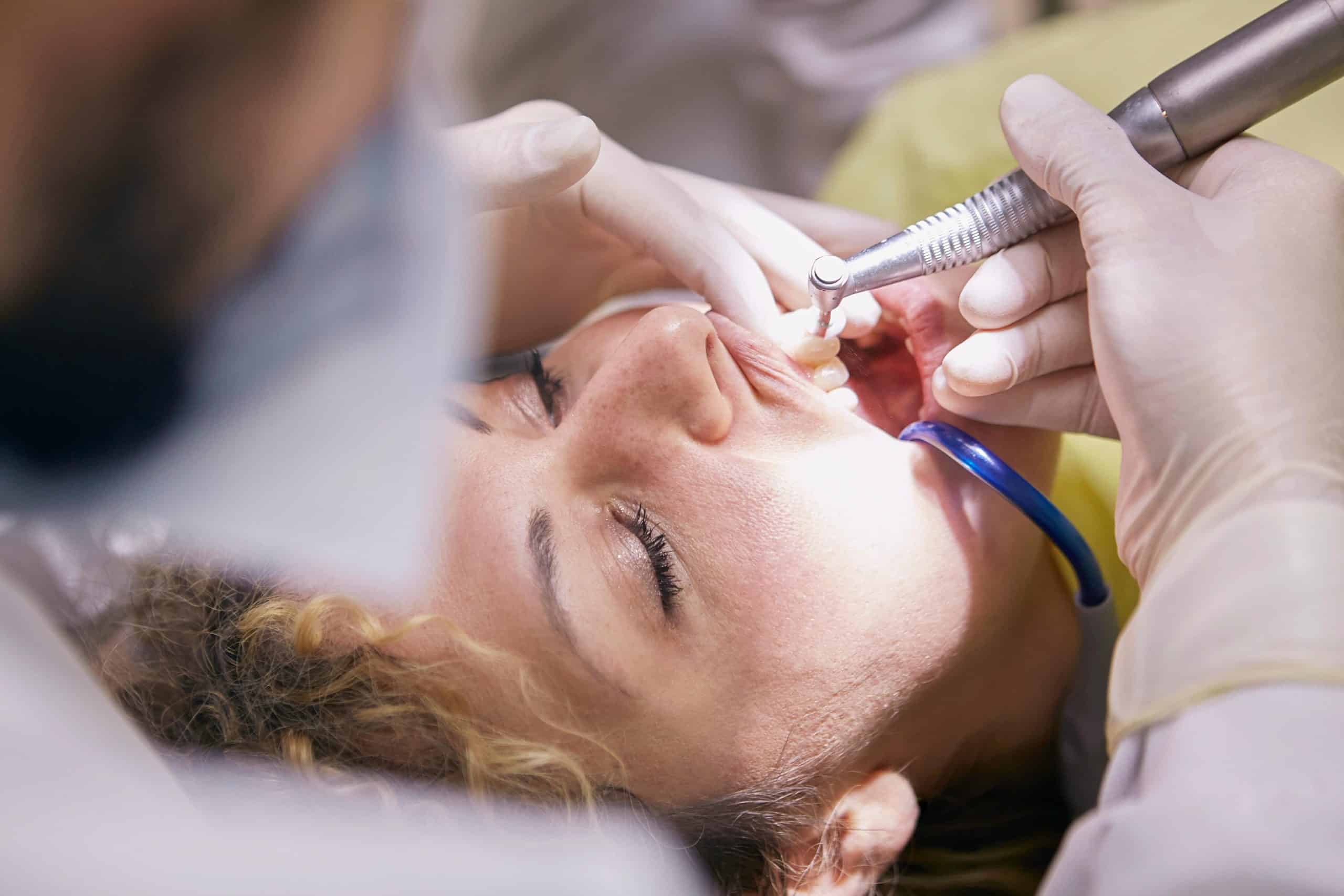In the continuously evolving arena of dental healthcare, the role of dental hygienists in maintaining optimal oral health cannot be overemphasized. Dental hygienists provide critical oral care services including teeth cleaning, polishing, and preventive oral health education. Among their repertoire of services is plaque removal, a crucial step in preventing gum diseases. A recent advancement in plaque removal is ultrasonic scaling, a technology that promises more efficient and effective plaque and tartar removal. Understanding how this innovative technique can be integrated into the dental hygiene practice in the UK is crucial for improving patient outcomes and advancing oral healthcare.
Ultrasonic Scaling: The Game-Changing Approach to Plaque Removal
Before diving into how ultrasonic scaling can be integrated, it’s important to understand what it is and how it works. Ultrasonic scaling is a technique that uses ultrasonic vibrations to break down hard plaque and tartar deposits on teeth surfaces. It allows dental hygienists to provide a more comprehensive treatment, reaching below the gumline and into periodontal pockets where manual scaling tools may struggle to reach.
Topic to read : Chiropractor kings hill: your solution for pain relief and better movement
Ultrasonic scaling offers several advantages over manual scaling. It is often quicker, less discomforting for the patient, and can access hard-to-reach areas more efficiently. This technology, however, must be integrated carefully and correctly to ensure the maximum benefit for both the patient and the dental hygienist.
Training and Education: The Basis for Integrating Ultrasonic Scaling
Firstly, to integrate ultrasonic scaling into a dental hygiene practice, hygienists must be properly trained and educated. While the principle behind ultrasonic scaling is straightforward, its application requires precision and knowledge. Hence, dental hygienists should engage in continuous professional development, attending workshops, seminars, and online courses to stay abreast of the latest techniques and guidelines.
This might interest you : What are the critical factors for UK emergency room doctors to consider when treating venomous bites?
Hygiene schools should consider incorporating ultrasonic scaling into their curriculum to ensure new graduates are well-versed in its use. Further, mentorship programs could be established to allow experienced hygienists to share their knowledge and skills in ultrasonic scaling with less experienced colleagues. Through proper education and training, dental hygienists can confidently and effectively incorporate ultrasonic scaling into their practice.
Equipment Selection and Maintenance: The Cornerstones of Efficiency and Effectivity
The type of ultrasonic scaler used can greatly affect the outcome of the procedure. Therefore, careful thought should be given to the selection of equipment. Dental hygienists should be knowledgeable about the various types of ultrasonic scalers available, their features, and how they fit into their specific practice settings.
Moreover, regular maintenance of the equipment is crucial for its optimal functioning. Proper care includes routine calibration, cleaning, and regular service to ensure it’s functioning at its best. Never overlook the importance of equipment maintenance; it’s foundational to the successful integration of ultrasonic scaling.
Patient Education: An Essential Component for Acceptance and Compliance
In addition to the hygienist’s role in implementing ultrasonic scaling, patient education plays a pivotal role in its successful integration. Many patients are unfamiliar with ultrasonic scaling and may feel apprehensive about the procedure. Therefore, it’s crucial to educate patients about the benefits of ultrasonic scaling, how it works, and what to expect during and after the procedure.
Dental hygienists should also reassure patients that ultrasonic scaling, while more efficient, is not more painful than traditional scaling. This can help alleviate any fear or anxiety patients may have, leading to higher acceptance rates and improved patient outcomes.
Clinical Guidelines and Protocol Adherence: A Roadmap for Standardized Care
Lastly, adherence to clinical guidelines and protocols is crucial for the safe and effective integration of ultrasonic scaling. Dental hygienists should be familiar with the current guidelines, and these should be reflected in their clinical practice.
Following a standardized protocol ensures that all patients receive consistent, high-quality care, regardless of who is providing the treatment. It also reduces the risk of errors and increases the overall effectiveness of the procedure. In the case of ultrasonic scaling, protocols may cover aspects such as patient assessment, equipment handling, infection control, and post-treatment care.
In summary, ultrasonic scaling represents an innovative advancement in dental hygiene offering numerous benefits to patients. However, its effective integration requires concerted efforts in training, equipment selection and maintenance, patient education, and adherence to clinical guidelines. By adopting these steps, dental hygienists in the UK can harness the power of ultrasonic scaling for more effective plaque removal, contributing to better oral health for their patients.
Ultrasonic Scaling: A Path Towards Enhanced General Dental Health
Ultrasonic scaling isn’t solely about plaque and tartar removal. It’s part of a broader commitment to improving general dental health. When incorporated into regular dental care routines, it can significantly contribute to the prevention of periodontal disease.
Ultrasonic scaling is a powerful method to deal with the hard-to-remove plaque tartar that contributes to gum disease. Patients who suffer from periodontal disease often have deeper probing depths that manual scaling struggles to clean effectively. Thanks to the high-frequency vibrations of an ultrasonic dental tool, the process can reach these depths and provide a thorough cleaning, even in hard-to-reach areas.
Routinely incorporating ultrasonic scaling into dental hygiene practices could significantly reduce the incidence of periodontal disease. By eliminating stubborn plaque and tartar, we can halt the progression of gum disease and even reverse its effects. As a result, patients can enjoy healthier teeth and gums, contributing to better overall oral health.
Moreover, this technique can also enhance the effects of regular dental cleanings. When included in routine scale and polish services, ultrasonic scaling can ensure a more in-depth clean, leaving patients with a brighter, healthier smile.
Conclusion: Ultrasonic Scaling – Revolutionising Dental Hygiene Practices
As we have seen, the successful integration of ultrasonic scaling into UK dental hygiene practices requires a comprehensive strategy. From the outset, it’s essential that dental hygienists are adequately trained and knowledgeable about this innovative technology. They should be well-versed in operating the equipment, maintaining it, and explaining its benefits and procedure to patients.
Patient education is a pivotal piece of the puzzle. By explaining the advantages of ultrasonic scaling and dispelling any potential fears, dental hygienists can encourage patients to accept this advanced treatment option. This will undoubtedly enhance the efficiency of plaque and tartar removal and elevate the standards of routine scale and polish services.
Finally, adherence to clinical guidelines and protocol is non-negotiable. Standardised care guarantees every patient receives consistent, high-quality treatment, ultimately enhancing the procedure’s overall effectiveness and improving oral hygiene.
Therefore, the integration of ultrasonic scaling into dental hygiene practices in the UK should not be viewed as a mere addition to the services currently offered but as a holistic shift in the way dental care is delivered. This will enable dental hygienists to provide more effective and efficient periodontal treatment, translating into healthier smiles and improved oral health for their patients. The future of dental hygiene is here, and it’s ultrasonic.











